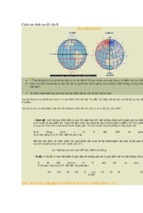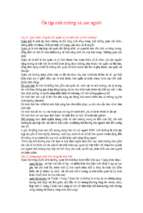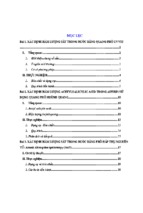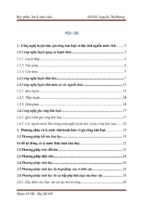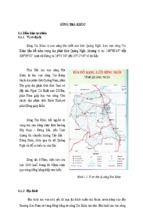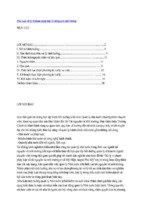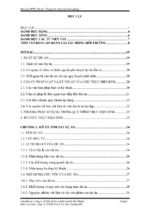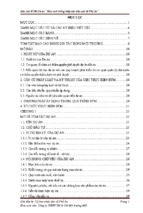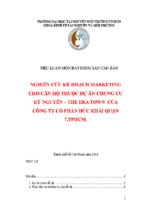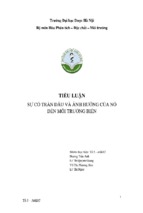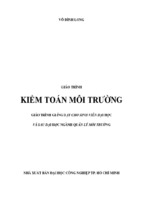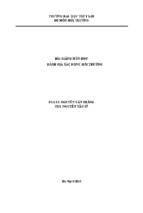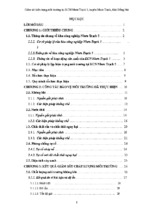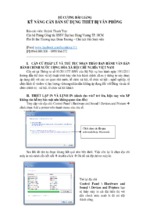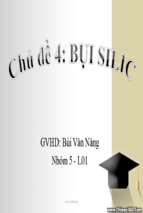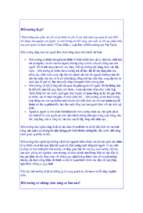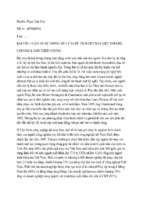The Global Environment, Natural
Resources, and Economic Growth
This page intentionally left blank
The Global Environment,
Natural Resources, and
Economic Growth
Alfred Greiner and Willi Semmler
1
2008
3
Oxford University Press, Inc., publishes works that further
Oxford University’s objective of excellence
in research, scholarship, and education.
Oxford New York
Auckland Cape Town Dar es Salaam Hong Kong Karachi
Kuala Lumpur Madrid Melbourne Mexico City Nairobi
New Delhi Shanghai Taipei Toronto
With offices in
Argentina Austria Brazil Chile Czech Republic France Greece
Guatemala Hungary Italy Japan Poland Portugal Singapore
South Korea Switzerland Thailand Turkey Ukraine Vietnam
Copyright © 2008 by Oxford University Press, Inc.
Published by Oxford University Press, Inc.
198 Madison Avenue, New York, New York 10016
www.oup.com
Oxford is a registered trademark of Oxford University Press.
All rights reserved. No part of this publication may be reproduced,
stored in a retrieval system, or transmitted, in any form or by any means,
electronic, mechanical, photocopying, recording, or otherwise,
without the prior permission of Oxford University Press.
Library of Congress Cataloging-in-Publication Data
Greiner, Alfred.
The global environment, natural resources, and economic growth/
Alfred Greiner, Willi Semmler.
p. cm.
Includes bibliographical references and index.
ISBN 978-0-19-532823-3
1. Economic development—Environmental aspects. 2. Pollution—Economic aspects.
3. Natural resources—Management. I. Semmler, Willi. II. Title.
HD75.6.G745 2008
333.7—dc22q
2007047160
9 8 7 6 5 4 3 2 1
Printed in the United States of America
on acid-free paper
“We have not inherited the earth from our ancestors, we have only borrowed it
from our children.”
—Ancient Proverb
“Act so that the effects of your action are compatible with the permanence of
genuine human life.”
—Hans Jonas (1903–1993),
German-born philosopher,
taught at the New School, 1955–1976
This page intentionally left blank
Preface
Recently public attention has turned toward the intricate interrelation
between economic growth and global warming. This book focuses on
this nexus but broadens the framework to study this issue. Growth
is seen as global growth, which affects the global environment and
climate change. Global growth, in particular high economic growth
rates, implies a fast depletion of renewable and nonrenewable resources.
Thus the book deals with the impact of economic growth on the environment and the effect of the exhaustive use of natural resources as
well as the reverse linkage. We thus address three interconnected issues:
economic growth, environment and climate change, and renewable and
nonrenewable resources. These three topics and the interrelationship
among them need to be treated in a unified framework. In addition, not
only intertemporal resource allocation but also the eminent issues relating to intertemporal inequities, as well as policy measures to overcome
them, are discussed in the book. Yet more than other literature on global
warming and resources, we study those issues in the context of modern
growth theory. Besides addressing important issues in those areas we
also put forward a dynamic framework that allows focus on the application of solution methods for models with intertemporal behavior of
economic agents.
The material in this book has been presented by the authors at
several universities and conferences. Chapters have been presented
as lectures at Bielefeld University; Max Planck Institute for Demographic Research, Rostock; Sant’Anna School of Advanced Studies of
Pisa, Itlay; University of Technology, Vienna; University of Aix-enProvence; Bernard Schwartz Center for Economic Policy Analysis of
the New School, New York; and Chuo University, Tokyo, Japan. Some
chapters have also been presented at the annual conference of the Society of Computational Economics and the Society of Nonlinear Dynamics
and Econometrics. We are grateful for comments by the participants of
those workshops and conferences.
Some parts of the book are based on joint work with co-authors.
Chapter 14 is based on the joint work of Almuth Scholl and Willi
Semmler, and chapter 15 originated in the joint work of Malte Sieveking
and Willi Semmler. We particularly want to thank Almuth Scholl and
Malte Sieveking for allowing us to use this material here.
vii
viii
Preface
We are also grateful for discussions with and comments from Philippe
Aghion, Toichiro Asada, Buz Brock, Graciela Chichilnisky, Lars Grüne,
Richard Day, Ekkehard Ernst, Geoffrey Heal, James Ramsey, Hirofumi
Uzawa, and colleagues of our universities. We thank Uwe Köller for
research assistance and Gaby Windhorst for editing and typing the
manuscript. Financial support from the Ministry of Education, Science
and Technology of the State of Northrhine-Westfalia, Germany, and from
the Bernard Schwartz Center for Economic Policy Analysis of the New
School is gratefully acknowledged. Finally we want to thank numerous anonymous readers and Terry Vaughn and Catherine Rae at Oxford
University Press, who have helped the book to become a better product.
Contents
Introduction
3
Part I The Environment and Economic Growth
1 Introduction and Overview
7
2 The Basic Economic Model
2.1 The Household Sector
2.2 The Productive Sector
2.3 The Government
2.4 Equilibrium Conditions and the Balanced
Growth Path
10
10
11
12
3 Growth and Welfare Effects of Fiscal Policy
3.1 Growth Effects of Fiscal Policy on the BGP
3.2 Growth Effects on the Transition Path
3.3 Welfare Effects of Fiscal Policy on the BGP
and the Social Optimum
3.3.1 Welfare Effects
3.3.2 The Social Optimum
17
17
22
4 The Dynamics of the Model with Standard
Preferences
13
26
26
28
31
5 Pollution as a Stock
5.1 The Household Sector
5.2 The Productive Sector and the Stock of Pollution
5.3 The Government
5.4 Equilibrium Conditions and the Balanced
Growth Path
5.5 The Dynamics of the Model
5.6 Effects of the Different Scenarios on
the Balanced Growth Rate
39
39
40
41
6 Concluding Remarks
51
41
43
47
x
Contents
Part II Global Warming and Economic Growth
7
Introduction and Overview
55
8
Facts on GHG Emissions and the Change in
Average Global Surface Temperature
60
A Descriptive Model of Endogenous Growth
9.1 Structure of the Model
9.2 The Balanced Growth Path
9.3 Numerical Examples
63
63
65
68
9
10 The AK Endogenous Growth Model
10.1 The Second-Best Solution
10.2 The Social Optimum
10.3 A Multiregion World
10.3.1 The Noncooperative World
10.3.2 The Cooperative World
10.3.3 Equal Marginal Damages in All Regions
71
72
75
77
79
84
87
11 A Model with Optimizing Agents
11.1 The Competitive Economy
11.1.1 The Structure of the Economy
11.1.2 Analytical Results
11.2 The Social Optimum
11.3 Modeling Nonlinear Feedback Effects of the Rise in
Temperature
11.3.1 The Competitive Economy
11.3.2 The Social Planner’s Problem
89
89
89
92
100
12 Concluding Remarks
120
Part III Depletion of Resources and
Economic Growth
123
13 Introduction and Overview
125
14 Nonrenewable Resources
14.1 Introduction
14.2 Economic Growth with Resource Constraints
14.2.1 A Basic Model
14.2.2 Technological Change
14.2.3 The Role of Backstop Technology
127
127
128
128
130
132
107
109
116
Contents
xi
14.3 The Importance of Intergenerational Equity
14.3.1 The Amenity Value of Natural Resources
14.3.2 Resources and Intergenerational Equity
14.4 Assessment of the Finiteness of Resources
14.5 Assessment of Petroleum Reserves
14.6 Estimation of a Basic Model
Appendix: Sketch of Solutions and Data Sources
133
133
135
137
140
142
145
15 Renewable Resources
15.1 Introduction
15.2 Renewable Resources and Optimal Growth
15.3 Open Access: Zero Horizon Optimization
15.3.1 Elasticity of Demand and Optimal Effort
15.3.2 Predator-Prey System
15.3.3 System of Competing Species
15.4 The Monopoly: Infinite Horizon Optimization
15.5 Concluding Remarks
Appendix
157
157
159
166
166
166
167
171
175
177
16 Regulation of Resources
16.1 Introduction
16.2 The Model
16.3 Numerical Results for the Partial
and Complete Model
16.4 Concluding Remarks
Appendix
180
180
182
17 Conclusion
190
Appendix: Three Useful Theorems from Dynamic
Optimization
194
Bibliography
197
Index
205
184
186
188
This page intentionally left blank
The Global Environment, Natural
Resources, and Economic Growth
This page intentionally left blank
Introduction
The globalization of economic activities since the 1980s and 1990s,
accelerated through free trade agreements, liberalized capital markets,
and labor mobility, has brought into focus the issues related to global
growth, resources, and environment. The industrialization in many
countries in the past 100 years and the resource-based industrial activities have used up resources, mostly produced by poor and developing
countries. The tremendous industrial growth in the world economy, particularly since World War II, and the current strong economic growth in
some regions of the world, for example in Asia and some Latin American
countries, have generated a high demand for specific inputs. Renewable
as well as nonrenewable resources have been in high demand, and they
are threatened with being depleted. In particular, the growing international demand for metals and energy derived from fossil fuels, as well
as other natural resources, which are often extracted from developing
countries, has significantly reduced the years to exhaustion for those
resources.
It is true that technical progress has reduced the dependence of
modern economies on natural resources, which is beneficial for their
conservation, but this positive effect mostly holds for advanced
economies producing with up-to-date technologies. Developing nations
producing with older technologies usually do not have this advantage.
In addition, several of those countries have experienced high growth
rates over the past years. In particular, China and India have grown very
fast over the past decades. These two countries alone comprise a population of more than two billion citizens, and the high growth rates in
these countries have led to a dramatic increase in the demand for natural
resources.
Whereas modern economies, like those in Western Europe and
Japan, could reduce their dependence on nonrenewable resources, this
does not necessarily hold for renewable resources. In particular, many
oceans have been overfished for a long time. Current estimates assume
that about 75 percent of the worldwide fish population is overfished.
Although this problem has been realized by scientists and politicians, the
short-run gains seem to be more important than conservation, leading
to a severe threat to some fish species.
There is also an issue of inequity involved. An overwhelming fraction of resources, located in the South, are used up in the North, in
3
4
Introduction
the industrialized countries, and the North has become the strongest
polluter of the global environment. Many recent studies have confirmed
that the emission of greenhouse gases is the main cause for global warming. Moreover, concerning intergenerational equity, current generations
extensively use up resources and pollute the environment. Both produce
negative externalities for future generations.
Indeed, not only does the environmental pollution strongly affect the
current generation, but the environmental degradation affects future
generations as well. It is true that as for the dependence on natural resources, technical progress has led to a more efficient use of
technologies so that emissions of some pollutants have been reduced
considerably. Indeed, in a great many regions in Europe and in the
United States, for example, air pollution has been successfully reduced,
leading to a cleaner environment. However, this does not hold for all
types of emissions. In particular, emissions of greenhouse gases are at
a high level and still increasing. Concerning greenhouse gas emissions,
the high standard of living of modern Western societies makes these
countries emit most of these gases, if measured per capita. Since the
conference and protocol of Kyoto in 1997, the global change of the climate has become an important issue for academics as well as politicians.
Although some countries had cast doubt on the fact that it is humankind
that produces a global climate change, this question seems to have been
answered now. There is vast evidence that the climate of the Earth is
changing due to increases in greenhouse gases caused by human activities (see, for example, the report by Stern 2006, 2007, and the IPCC
report 2007).
Although some may argue that to address and study those issues on
global growth, environment, and resources, large-scale macro models
may be needed. Yet when those models are solved through simulations,
the mechanisms get blurred, and policy implication are not transparently derived. This book takes a different route. In the context of modern
small-scale growth models, where the behavior of the agents and the
framework are well defined, clear and coherent results are derived that
may become useful guidelines for policy makers and practitioners.
The outline of the book reflects the discussed major issues. Part I
deals with the environment and growth. We present models that incorporate the role of environmental pollution into modern growth models
and derive optimal abatement activities as public policy. Part II models
global climate change in the context of economic growth models. Policy
implications are direct and transparent. Part III evaluates the use and
overuse of nonrenewable and renewable resources in the context of
intertemporal economic models. Aspects of global and intertemporal
inequities as well as policy measures to overcome them are discussed
in each part of the book.
PART I
The Environment and
Economic Growth
This page intentionally left blank
1
Introduction and Overview
There are numerous economic models that study the interrelation
between economic growth and the environment. We focus on a class of
models in which economic activities lead to environmental degradation,
and thus economic activity negatively affect the utility of households or
the production activities of firms. This line of research goes back to
Forster (1973) and was extended by Gruver (1976). Forster (1973), for
example, studies a dynamic model of capital accumulation, the Ramsey
growth model, with pollution as a byproduct of capital accumulation
that can be reduced by abatement spending. In the long run, this model
is characterized by a stationary state where all variables are constant
unless exogenous shocks occur.
Another early contribution in environmental economics is the book
by Mäler (1974), which can be considered as a classical contribution in
this field. Mäler analyzes several aspects associated with environmental degradation in different frameworks, such as a general equilibrium
model of environmental quality and an economic growth model incorporating the environment. But Mäler assumes a finite time horizon and
is less interested in the long-run evolution of economies, in contrast to
Forster (1973).
If one studies a growth model and intends to analyze the long-run
evolution of economies, models with constant variables in the long run
are rather unrealistic. With the publication of the papers by Romer (1986,
1990) the “new” or endogenous growth theory has become prominent.
The major feature of models within this line of research is that the growth
rate becomes an endogenous variable, the per capita income rises over
time, and the government may affect growth through fiscal policy, for
example. Concerning the forces that can generate ongoing growth, one
can think of positive externalities associated with investment, the formation of human capital, or the creation of a stock of knowledge through
R&D spending (for a survey, see Greiner et al. 2005).
Another type of model in endogenous growth theory assumes that the
government can invest in productive public capital, which stimulates
aggregate productivity. This approach goes back to Arrow and Kurz
(1970), who presented exogenous growth models with that assumption
in their book. The first model in which productive public spending leads
to sustained per capita growth in the long run was presented by Barro
(1990). In his model, productive public spending positively affects the
7
- Xem thêm -

